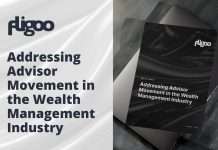RegTech firm ViClarity recently explained why the leveraging of vendor management practices can provide key benefits around risk and resilience.
Regulators are strengthening rules and focusing on operational resilience across sectors — particularly in the financial industry. Financial institutions of all types are working to empower their organizations to resist, absorb and recover from or adapt to risk events. One of the most common threats is third-party risk.
Through the dozens (sometimes hundreds!) of vendors they work with every day, financial institutions are more susceptible to a wide variety of risks. Learning to work through and not just avoid those risks can help organizations recover from events faster with a minimal drain on resources.
Some vendors may have access to client data or employee data and some simply manage the landscaping. However big or small their contribution to an organization may be, the information vendors access while working with an organization necessitates a certain level of prudence. Without continuous monitoring and evaluation of vendor relationships, financial institutions open themselves up to vulnerabilities and potential regulatory penalties. Vendor due diligence is a critical component of the overall safety and soundness of an organization, specifically their responsibility to protect customer data.
While vendor management processes might look different from one organization to the next, the best practices and components of an exemplary program look the same at the core. It all starts with creating quality policies that outline fair and consistent evaluation and oversight of third parties as they start to interact within an organization during the selection stage.
Vendor Selection & Due Diligence
During the interview and review process, organizations should conduct thorough evaluations; intensity may vary based on the type of vendor and the criticality of their services. In addition to establishing a relationship, a rigorous interview process provides another layer of protection by creating a mutual understanding of needs, expectations and potential risks.
Due diligence reviews should be repeated regularly throughout the entirety of an organization’s relationship with a vendor, but when kicking off a new one it’s especially important to implement background checks and assess reports, financials, business continuity and disaster recovery plans, and other relevant documentation.
Risk Assessments
When onboarding new vendors, organizations should assign risk ratings and continue to reevaluate those ratings as time progresses. This can range from low to moderate to critical risk depending on each vendor’s access to data. Low ratings are saved for a minimally involved group, like landscapers, while a critical rating is saved for a group that has access to important customer or employee data, like a compliance management system. Ultimately, the assessments and ratings are guided by each organization’s specific internal policies and criteria.
Contract Review & Negotiations
In addition to risk assessments, drafting solid, stringent contracts for vendors can be a challenging task. Organizations should consider components such as cost or fees, early termination clauses, and business continuity and disaster recovery plans. While preparing for worst-case scenarios may seem pessimistic, it can save an organization when risk events occur. Contracts that clearly define a vendor’s insurance coverage along with steps and requirements if a data breach occurs ensure liability protection and, ideally, responsive and timely remediation actions.
Ongoing Monitoring & Mitigating Risks
While due diligence is important at the beginning of the vendor life cycle, it is just as important — if not more important — to maintain continuous monitoring throughout the entirety of the relationship. These checks should be performed at least annually for vendors with high risk and criticality ratings. Frequency and steps can vary, but should include regular review of reports, contracts, and key documents.
Many organizations are turning to technology solutions to help their staff manage vendor relationships and third-party risk. Software platforms like ViClarity can provide organization, control and oversight, saving organizations time and enabling real-time monitoring and collaboration.
Third-party risks are unavoidable, but when monitored and attended to efficiently, can be manageable for any organization. By maintaining a robust vendor management program, financial institutions can become more agile and adept at responding to risk events when they occur, boosting overall operational resilience and success.
Keep up with all the latest FinTech news here
Copyright © 2023 FinTech Global











